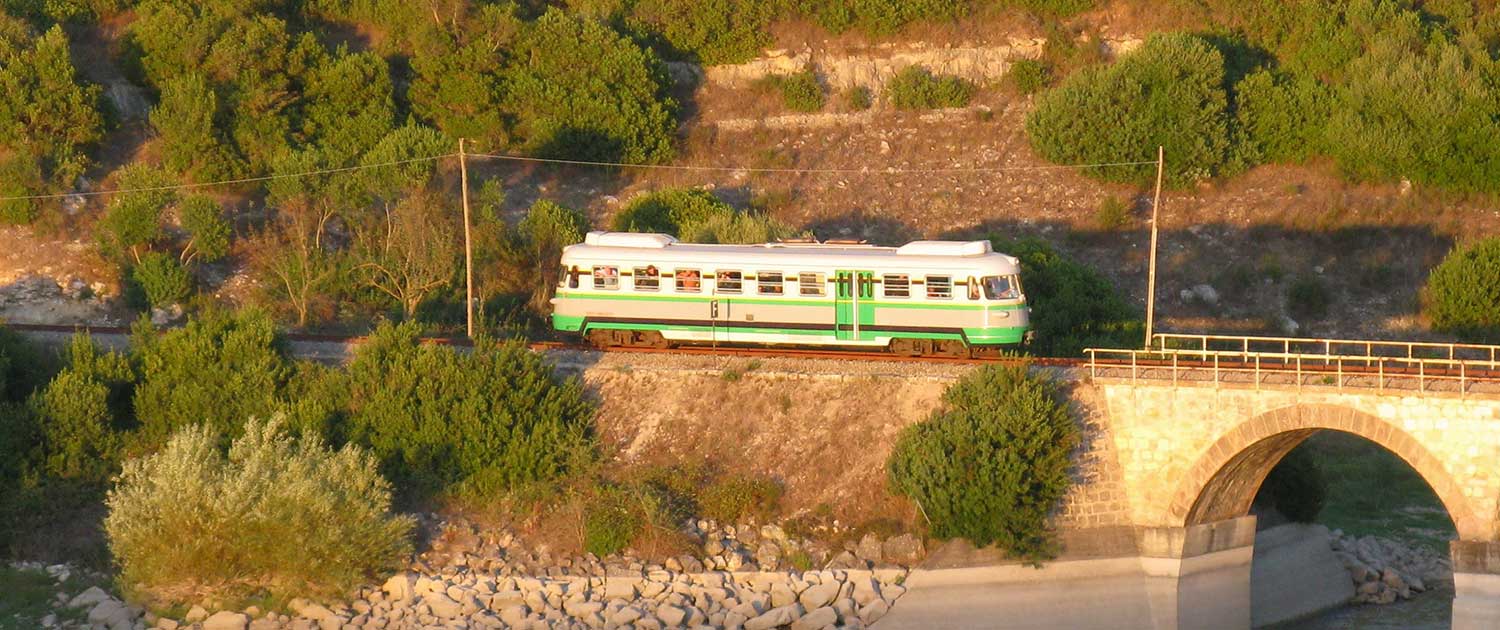Mandas
The station of Mandas located in Largo Lawrence is one of the largest on the line. Here, in January 1921, stayed the English writer David Herbert Lawrence during his trip to Sardinia with his wife. In the historical center you can see the Museum of Sacred Art, the Parish Church of San Giacomo and the House-museum of the ancestors. Leaving Mandas, one proceeds on the Light Public Transport line towards Isili, leaving the tourist line to the east for Arbatax.
Serri
The first station you encounter is that of Serri, not far from the town famous for the important nuragic area of Santa Vittoria. Proceed through the hilly landscape of Sarcidano to arrive in Isili.
Isili
Important center of the territory, in Isili is located the interesting Museum of the copper and of the fabric. Characteristic is, in the center of the town, the white Church of San Giuseppe Calasanzio, of rustic island architecture.
Nuraghe Is Paras
The railroad crosses the whole village for its length and at the exit it passes next to the Nuraghe Is Paras, one of the best preserved of the territory and that constituted a bulwark to protect the Valley of Flumini Mannu.
The Nuraghe, whose origin fascinates travelers, was built with large limestone slabs, and reached its peak in the fifteenth century B.C. It is equipped with a solid vault and an imposing access staircase to discover the architectural perfection of the upper chamber.
Sarcidano
The recovered Station of Sarcidano, was once very important because from here departed the railway to Ales and Villacidro, now dismantled, but viable for long stretches as a bike path.
The station is in front of the Lake of Is Barroccus, created in 1991 with an artificial barrage of the Rio Mannu that has isolated, on a rocky spur, the Church of San Sebastiano.
Nurallao
The Station of Nurallao, converted into a place of welcome and refreshment, is located in a dominant position over the village below. Nurallao preserves the splendid megalithic tomb of Aiodda which dates back to the 15th century B.C. In the territory of the country there is also the beautiful naturalistic park of Funtana Is Arinus with its numerous waterfalls for a walk in the green among the uncontaminated vegetation.
After the country stops of Cignoni and Su Lau, once also used for the transport of material from the nearby clay quarries, we continue accompanied by the flat and unmistakable outline of the Giara di Gesturi.
Laconi
The terminus of the journey is in the station of Laconi, not far from the village. Laconi is also called “the Sardinian Assisi” for being the birthplace of Saint Ignatius, who lived in the 18th century and is one of the most venerated saints on the island. In the village there is the Aymerich Park for a refreshing stop in the shade of centuries-old trees and the homonymous palace, last residence of the Marquises of Laconi with the interesting Museum of the prehistoric statues of Sardinia.

